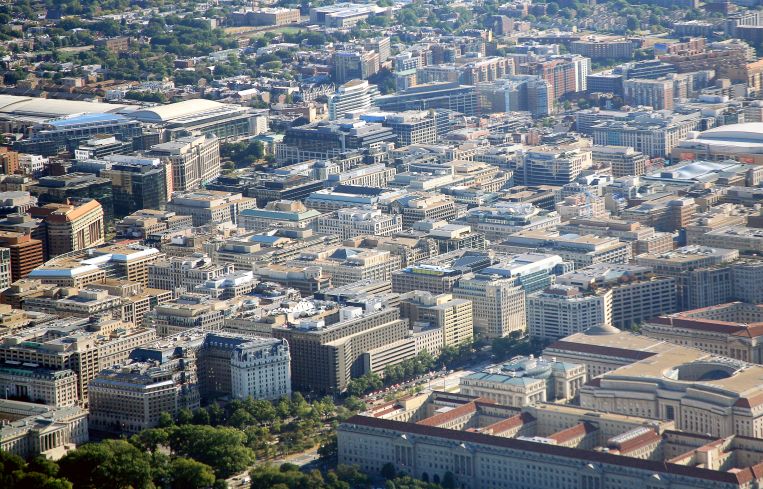DC Office Landlords Want City’s Help for Distressed Office Market
By Keith Loria November 29, 2022 5:03 pm
reprints
Some of Washington, D.C.’s most notable office landlords have reached out to city officials requesting intervention in the District’s distressed office market, given the risks it could pose to the fiscal health of both the market and Washington as a whole.
In a letter sent by the Federal City Council to Glen Lee, D.C.’s new chief financial officer, the economic development group asked that Lee’s office better explain how it is accounting for the level of distress facing the city’s office market, particularly since the latest D.C. budget included increased tax rates for commercial properties.
Companies that signed the letter include Hines, Boston Properties, Brookfield, Trammell Crow, JBG Smith, Carr Properties, PRP, Akridge and Hoffman & Associates.
In particular, the letter asks for more clarity on how the District determines key variables like cap rates for office buildings, and how it takes into account sales of distressed properties.
While the letter doesn’t criticize District officials, it does unequivocally show the companies involved worry that D.C. policymakers don’t fully understand how distressed the office market really is, and it urges officials to meet with them to address the impending budget gap.
The letter states that the office market in downtown D.C. is experiencing significant setbacks resulting from the dramatic and persistent decline in commuter activity combined with the uptick in remote work.
“To be clear, the years leading up to the pandemic saw deteriorating conditions in the D.C. office market,” the letter states. “The pandemic and work from home have further eroded fundamentals, and all indicators of the health of the District’s office market point to increased systemic risk and distress.”
Citing vacancy rates, the letter points out that, of the 733 large office buildings in the District with a heavy office presence, 137 are now more than 25 percent vacant. Overall, the office vacancy rate in the Central Business District is at 20.3 percent, an increase from 10.6 percent in the last quarter of 2019. Sinking office demand is something being experienced across the nation.
The letter also points to lackluster leasing activity, noting private companies and the federal government have both pulled back recently. The year-to-date net absorption in the CBD and East End submarkets was -174,763 square feet and -391,485, respectively.
Additionally, there have been very few sales in 2022, which the letter notes is a “troubling sign,” and it’s expected that there will be more frequent distressed sales. And while some sales involve office-to-residential conversions, which is good news for Downtown, it’s bad news for office market valuations, the letter reads.
“D.C. is doing many promising things to bring energy and vitality back Downtown, like pursuing office-to-residential conversions and redoubling its tourism promotion efforts,” Kevin Clinton, chief program officer for the Federal City Council, told Commercial Observer. “Ultimately, we think that the future of downtown is going to have a greater mix of uses, and office, residential, arts, entertainment and parks will all be part of the solution.”
So, even as many companies pursue telework more, there’s a need to focus on corporate attraction for those companies that do want to be in dynamic places, to replace some businesses who downsize or vacate their space.
“Our interest in this matter is not about being overtaxed,” the letter states. “We are primarily concerned about the future fiscal health of the city. For every decline of $100 million in commercial property tax assessments, annual property tax revenue falls by $2 million. It is vitally important for city officials to fully comprehend the difficult environment commercial office buildings are operating under and the risks to the future tax revenue.”
Paul C. Dougherty, president of PRP, told CO it’s important to look at how the D.C. market has arrived at its current situation. Part of it has been through tenants resizing over the last cycle combined with a rise in those working from home, he said.
“A lot of this started before the COVID period — probably five to 10 years ago — but at the same time, we were introducing new markets into D.C., such as the ballpark, waterfront and Mount Vernon Square,” Dougherty said. “People were flocking to newer product, and those markets filled with older product — like the CBD and the East End — have suffered.”
But beyond that, the city has had a hard time attracting new corporations and has lost a lot of companies, he added, and the pandemic just added to these problems.
“What we said to Glen Lee is we want you to do very well, but this budget is proposing a lot of blue skies and good news revenues that we don’t think are going to be there,” Dougherty said. “The letter was written to say, ‘Look, you need to step back and look at what’s happening, and you need to provide for what we think is going to be an extended down period in downtown office. You need to be conservative in how you look at things.’”
Keith Loria can be reached at Kloria@commercialobserver.com.


